#Java for Beginners: A Complete Introduction
Text
Java for Beginners: A Complete Introduction
A cornerstone of the IT enterprise with over nine million global users, Java is a general-purpose, object-orientated language that promotes a “write once, run anywhere” (WORA) improvement strategy.
https://medium.com/@rolandmack63/java-for-beginners-a-complete-introduction-97ada8f0242a
0 notes
Text
39 Best Websites to Find Free Textbooks, Research Papers, Study Guides, and Books
Whether you’ve just received a long list of textbooks you need for a specific uni class or are looking for a particular book/research paper for a high school project, books (and journal subscriptions) can be expensive.
The good news is that there are plenty of resources online where you can find free PDF versions of most written materials, starting with Atkinson & Hilgard’s Introduction to Psychology and ending with Shakespeare’s Macbeth.
Note that although some of the websites below provide access to copyright-free texts only, or texts that publishers/authors have agreed to share freely, others have been accused of internet privacy.
However, many people see open access practices as morally acceptable, especially considering the unsustainable prices of academic textbooks and papers.
To quote a recent paper on the topic:
"Since shadow libraries are a product of the cooperation between scholars, who contribute texts and other resources (such as donations, volunteer work, etc.), shadow libraries represent a ‘bottom-up’, radical approach to open access: a physical approximation of the Platonic ideal of knowledge sharing that would exist if there were no legal, economic, or institutional barriers to the circulation of scholarly knowledge."
Free Textbooks
Library Genesis

Library Genesis, or Libgen for short, is a shadow online library website where college students can find academic books (including those that are hard to find/very expensive) and scholarly journal articles.
The site also hosts general-interest books, audiobooks, comics, magazines, and images.
Z-Library
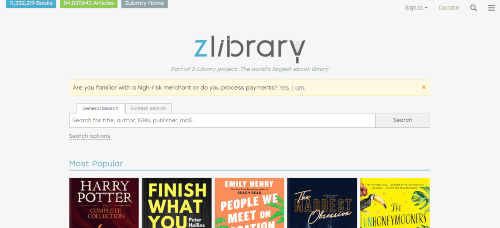
Z-Library is another shadow library website that hosts college textbooks, scholarly journal articles, and general-interest books. It calls itself “the world’s largest e-book library.” It mirrors Library Genesis.
The front page also features some of the most popular books at the time. When we viewed it, these included “Thinking Fast and Slow” by Daniel Kahneman, The Book Thief by Markus Zusak, and Harry Potter the Complete Collection by J. K. Rowling.
You can also use the right-hand navigation menu to see the books that have been added most recently, as well as sort through books based on category.
Use the Book Request option if you can’t find a book you’re looking for. There’s no guarantee your book will be added, but community members look at requests to see what books to upload (you can also upload books).
PDF Drive

PDF Drive is an online library with a ton of free ebooks and PDF textbooks in various categories, including academic & education (but also lifestyle, personal growth, art, linguistics, etc.)
ForCoder.su

Forcoder.su has lots of online textbooks on programming. It also provides free access to online courses, like Apache Kafka for beginners and object-oriented programming with Python. Currently, there are hundreds of free courses available.
Online Mathematics Textbooks

Online Mathematics Textbooks is your source for free digital textbooks on all things math. It’s just one page featuring 77 textbooks.
Tech Books for Free Download
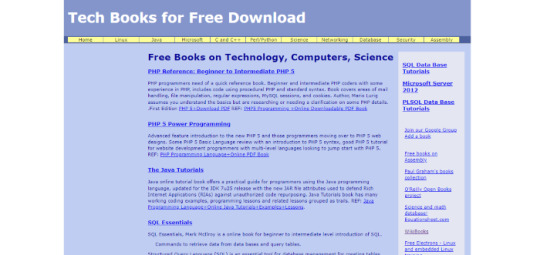
Tech Books for Free Download is where you’ll find free science and engineering books on topics ranging from data mining to general relativity.
There’s no way to search for books easily. However, the site is divided into books on Linux, Java, Microsoft, C and C++, Perl/Python, Science, Networking, Database, Security, and Assembly.
Free Tech Books

Free Tech Books is an open textbook library. It provides access to free computer science books and textbooks, plus lecture notes. All the books and lecture notes listed on this site are freely available on authors’ and/or publishers’ sites.
You can browse books by category (computer science, mathematics, supporting fields, operating system, programming/scripting, miscellaneous), author, publisher, or license.
Directory of Open Access Books

Directory of Open Access Books (DOAB) is a website that indexes and provides access to academic, peer-reviewed open-access books. All disciplines are covered, but there’s a particular emphasis on humanities, social sciences, and law.
Ubiquity Press

Ubiquity Press has been an open-access publisher of academic, peer-reviewed books and journals since 2012. It was founded by University of College London (UCL) researchers.
Research Papers
Sci-Hub

Sci-hub has the most expansive collection of research papers. Its mission is to “remove all barriers in the way of science.”
Directory of Open Access Journals

Directory of Open Access Journals (DOAJ) is an online directory of open-access, peer-reviewed research journals covering humanities, social sciences, technology, science, medicine, and art.
The directory indexes journals from different countries and languages. DOAJ is supported financially by publishers, libraries, and other organizations.
Wiley Open Access

Wiley Open Access provides peer-reviewed open-access journals across topics like biochemistry, economics, sociology, mathematics, and law.
SpringerOpen
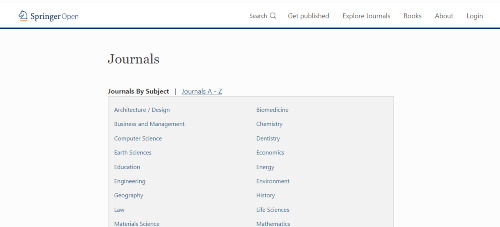
SpringerOpen publishes open-access journals across a wide range of areas, mainly STEM.
Elsevier
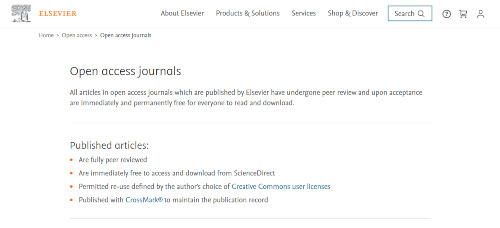
Elsevier publishes open-access, peer-reviewed journals. You can search for journals by title, keyword, or subject (dentistry, nursing, decision sciences, etc.)
Springer Link
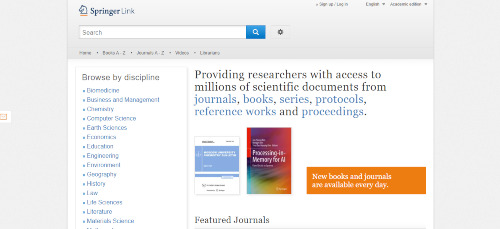
Springer Link provides access to ebooks, peer-reviewed journal articles, and other resources (mostly scientific).
BASE

BASE is a search engine for academic texts, including journals, digital collections, institutional repositories, etc. You can access about 60% of the indexed texts for free.
Study Guides
Bibliomania

Bibliomania has study guides to the most-read books, like “A Hero of Our Time,” “Animal Farm,” and even Irish politics. It also has over 2,000 classic texts, book summaries, author biographies, and more.
Books
Open Library
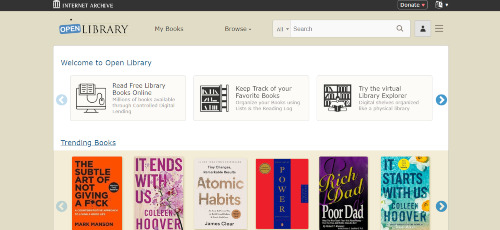
Open Library is an open library catalog of more than 3 million new and old books. The project was created by the nonprofit organization Internet Archive. It has also received partial funding from Kahle/Austin Foundation and the California State Library.
You can read old books without an account. However, for new books, you’ll need to set one up (it takes just a few minutes).
Internet Archive

Internet Archive is a digital library of ebooks. It also has free movies, music, and software.
Project Gutenberg

Project Gutenberg is a famous site where you can find lots of free books. There are more than 60,000 books in its collection.
Standard Ebooks

Standard Ebooks take public domain texts and make them as nice as new books. They fix typographical errors and typos, create cool cover art, and format the text for e-readers like Kindle and iPad.
Planet eBook

Planet eBook is where you can download free PDF copies of classics like Franz Kafka’s The Metamorphosis, Fyodor Dostoyevsky’s Crime and Punishment, and Joseph Conrad’s Heart of Darkness.
What really makes Planet eBook stand out is its UX. It’s one of those rare sites that are super easy to navigate and actually look good (aesthetically speaking).
The Ultimate Book Search Engine

The Ultimate Book Search Engine is an ebook search engine that includes 350 open directory sites that relate to ebooks. It was created by the Reddit user u/NotoriousYEG.
Classic Bookshelf

The Classic Bookshelf is a site where you’ll find lots of classic novels, everything from Charles Dickens and Leo Tolstoy.
Literature.org
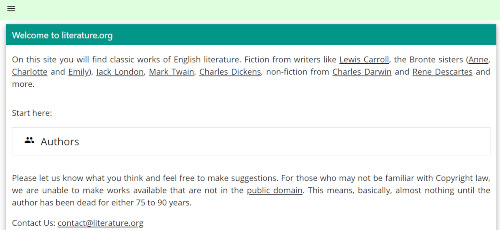
Literature.org features classic works of English literature, both fiction and non-fiction.
Bartleby

Bartleby is a site that features both fiction and nonfiction books.
Fiction.us

Fiction.us has a ton of books, including fiction, short stories, children's picture books, poetry, books on writing, and plays.
Classic Literature Library

As the name suggests, Classic Literature Library is where you’ll find classic literature works.
Ideology.us

Ideology.us is a site that has ebooks on philosophy, psychology, sociology, politics, and education.
The Complete Works of William Shakespeare

The Complete Works of William Shakespeare is where you’ll find all of Shakespeare’s work. The site is run by The Tech, the largest and oldest newspaper by the Massachusetts Institute of Technology in Cambridge.
Read Books Online

Read Books Online has around 6,000 ebooks, including novels, short stories, poems, essays, plays, and non-fiction.
Public Bookshelf

Public Bookshelf is a site dedicated to romance novels.
Categories of ebooks here include contemporary romance, romantic suspense, historical romance, regency romance, inspirational romance, vampire romance, western romance, general romance, and fantasy and paranormal romance.
The Perseus Project

The Perseus Project is a digital library created by Tufts University with books from Ancient Rome and Greece, published in original languages and English.
Chest of Books

Chest of Books has books on a ton of different subjects, including animals, finance, real estate, science, and travel.
The Literature Network

The Literature Network has books by authors like Anne Bronte, Lewis Carroll, and Lord George Gordon Byron. It also features forums, literature summaries, and quizzes.
The Online Books Page

The Online Books Page is a site by the University of Pennsylvania that houses books in categories like philosophy, history, medicine, science, agriculture, music, anthropology, and more. The site also links to the following:
Banned Books Online: A directory of books that were once banned and links to places where you can read them in full.
A Celebration of Women Writers: A directory that lists online editions of literary works by women as well as resources about women writers.
Prize Winners Online: A directory of prize-winning books.
Many Books

Many Books is “your friendly neighborhood library.” It houses over 50,000 books in genres like romance, mystery, young adult, horror, and non-fiction. You can read books online or download them to your device.
Authorama

Authorama turns public domain books on sites like Google Books and Project Gutenberg into HTML format, making it easier to read them.
Audiobooks
Librivox

Librivox has free audiobooks that you can listen to from any device.
#adulthood#young adult#new adult#adulting#how to be an adult#adulting is hard#adulting 101#growing up#grown up#all grown up#responsible#the responsible one#self improvement#self#self sufficiency#self sufficient living#daily life#lifehacks#life improvement#life tips#life hacks#life#tips and tricks#tips#hacks#hack#reference#ref#free shit#college
440 notes
·
View notes
Text
Java Programming 101: Essential Concepts for Beginners
Introduction:
Welcome to Java Programming 101! Whether you're a student diving into the world of coding or a working professional looking to expand your skill set, mastering Java is a valuable asset in today's tech-driven world. In this comprehensive guide, we'll cover the essential concepts you need to know to kickstart your journey in Java programming. Let's dive in!
I. Understanding Java Basics II. Variables, Data Types, and Operators III. Control Flow and Decision Making IV. Functions and Object-Oriented Programming
I. Understanding Java Basics:
Before diving into the intricacies of Java programming, it's essential to understand the basics. Java is a versatile programming language known for its platform independence and object-oriented approach. As part of your Java Programming Course, you'll learn how to write code that can run on any device with the Java Virtual Machine (JVM), making it a popular choice for building applications across various platforms.
II. Variables, Data Types, and Operators:
Variables are fundamental components in Java programming, used to store data values that can be manipulated throughout the program. Understanding data types such as integers, floating-point numbers, characters, and boolean values is crucial for declaring variables effectively. Additionally, operators such as arithmetic, relational, and logical operators play a vital role in performing operations on variables and values.
III. Control Flow and Decision Making:
Control flow statements allow you to dictate the flow of execution in your Java programs. From conditional statements like if-else and switch-case to looping structures such as for, while, and do-while loops, mastering control flow is essential for writing efficient and structured code. Understanding how to make decisions based on specific conditions is a fundamental skill that you'll develop as you progress through your Java Programming Course.
IV. Functions and Object-Oriented Programming:
Java is renowned for its support for object-oriented programming (OOP) principles, which promote modularity, reusability, and scalability in software development. Classes and objects serve as the building blocks of Java programs, encapsulating data and behavior into cohesive units. By defining classes, creating objects, and implementing methods, you'll learn how to leverage the power of OOP to create robust and maintainable code.
Conclusion:
Congratulations on completing this comprehensive guide to Java Programming 101! By mastering the essential concepts covered in this article, you've taken the first step towards becoming a proficient Java programmer. Whether you're interested in developing desktop applications, mobile apps, or enterprise-level software, the skills you've acquired through your Java Programming Course will serve as a solid foundation for your future endeavors. Have questions or thoughts to share? We'd love to hear from you in the comments below!
Ready to take your Java skills to the next level? Enroll in BIA's Java Programming Course today and unlock your potential in this dynamic field!
2 notes
·
View notes
Text
Master the Java Programming: Your Gateway to a Dynamic Digital Future
Java is more than just a programming language; it's a versatile and powerful platform that has left an indelible mark on the world of software development. Renowned for its cross-platform compatibility, readability, and extensive libraries, Java is a go-to choice for developers seeking to build diverse applications. Its applications range from web and mobile app development to scientific research, gaming, and enterprise-level software. Whether you're a seasoned developer or just starting your coding journey, Java offers a broad spectrum of opportunities and the potential to shape the digital future. This introduction sets the stage for delving into the vast world of Java and the myriad possibilities it holds.

When it comes to learning Java, there are various online platforms and resources available, but ACTE Technologies stands out as an exceptional choice for several compelling reasons. Java, a versatile and powerful programming language, has been a cornerstone of software development for years. Its wide range of applications, cross-platform compatibility, and readability make it a valuable skill to acquire. In this blog, we will explore the benefits of learning Java through, an institute that not only equips you with a deep understanding of Java but also provides comprehensive training, hands-on experience, industry-recognized certifications, and career support.
The Benefits of Learning Java through ACTE Technologies:
Comprehensive Curriculum: They offers a well-structured and comprehensive Java training program that covers the fundamentals and advanced concepts of Java programming. The curriculum is designed to provide a deep understanding of Java and its various applications. Whether you are a beginner or an experienced developer looking to enhance your skills, their courses cater to your needs. With a focus on building a strong foundation, you'll be prepared to tackle real-world challenges.
Experienced Instructors: The courses at They are taught by experienced Java professionals who have a strong grasp of the language and its practical use. Learning from experts in the field can significantly accelerate your learning journey. These instructors offer valuable insights, practical examples, and industry-relevant knowledge to help students excel. You can benefit from their experience and expertise as you navigate the intricacies of Java programming.
Hands-On Learning: They place a strong emphasis on practical learning. It's not just about understanding Java theory; it's about applying that knowledge to real-world scenarios. Students have the opportunity to work on hands-on projects and coding exercises that mirror the challenges faced by Java developers in the industry. This hands-on experience solidifies their Java programming skills and prepares them for actual development tasks. Learning by doing is a key principle of their approach.
Industry-Recognized Certification: Completing a Java training program comes with a valuable bonus: an industry-recognized certification. This certification serves as a testament to your skills and knowledge in Java programming. It's a valuable credential that can enhance your job prospects and career advancement. Many employers seek candidates with industry certifications, and this can give you a competitive edge in the job market.
Flexible Learning Options: They understands that every student has unique learning preferences and schedules. To cater to a diverse audience, they provide flexible learning options, including both online and classroom-based training. Whether you prefer the flexibility of online learning or the structure of classroom sessions, you can choose the format that best suits your needs. This flexibility allows you to learn at your own pace and in a way that aligns with your lifestyle.
Career Support: Beyond providing exceptional training, They go the extra mile by offering career support services. This includes job placement assistance and interview preparation. Their commitment to your success doesn't end with the completion of the course. They ensure that students not only gain knowledge but also have the tools and guidance needed to pursue successful careers in Java development. The career support services can be a game-changer as you transition into the professional world of software development.
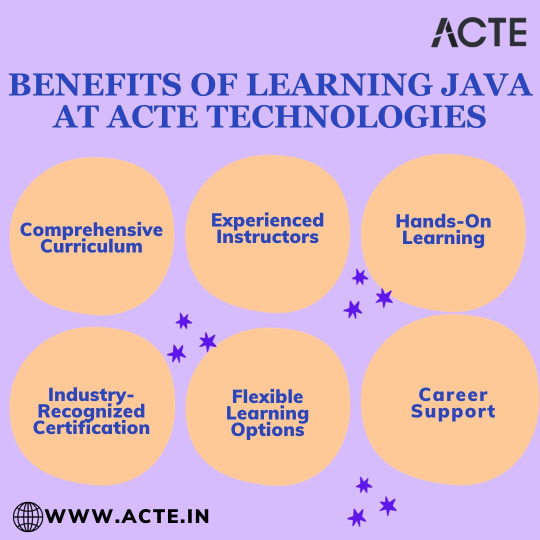
In conclusion, mastering Java programming is a valuable investment in your skill set and career. It opens doors to a wide range of opportunities in software development, and the demand for Java developers remains consistently high. While there are numerous platforms and resources available for learning Java, ACTE Technologies offers a distinctive advantage. Their Java training programs are designed to provide a comprehensive understanding of the language, hands-on experience, industry-recognized certifications, and career support. It's not just about learning Java; it's about excelling in Java. Your journey to becoming a proficient Java developer begins with ACTE Technologies, where the possibilities are limitless, and the digital world is yours to shape and innovate.
4 notes
·
View notes
Text
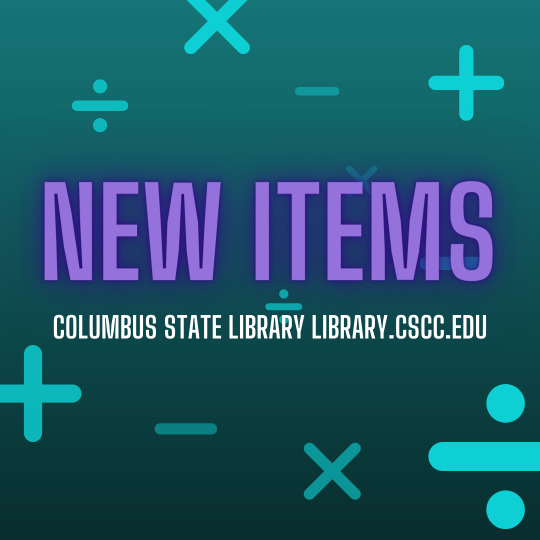
We've recently acquired dozens of STEM titles, with an emphasis on study guides and computer programming. Here's a sample of our latest additions!
Mathematics
Testimonios: Stories of Latinx and Hispanic Mathematicians
Mathematics for ESL Learners
Painless Pre-Algebra
The Manga Guide to Linear Algebra
Painless Geometry
Trigonometry: A Complete Introduction
Must Know High School Trigonometry
Trigonometry: With Calculator-Based Solutions
Painless Calculus
Painless Statistics
General Science
Scientific Writing = Thinking in Words
Too Big for a Single Mind: How the Greatest Generation of Physicists Uncovered the Quantum World
Physics: An Illustrated Guide for All Ages
El Libro de la Fisica
Biology: An Illustrated Guide for All Ages
Painless Biology
Chemistry: An Illustrated Guide for All Ages
Painless Earth Science
Computer Science
The Pattern on the Stone: The Simple Ideas That Make Computers Work
Introducing Microsoft Access Using Macro Programming Techniques: An Introduction to Desktop Database Development by Example
AutoCAD for Dummies
Network Security: Private Communication in a Public World
Gray Hat Hacking: The Ethical Hacker's Handbook
Practical Linux DevOps: Building a Linux Lab for Modern Software Development
Java 17 for Absolute Beginners: Learn the Fundamentals of Java Programming
You can use the "What's New" section of our catalog to browse all of our latest items! Current Columbus State students and employees can check out items using a photo ID.
6 notes
·
View notes
Text
Need Extra Time? Learn These Tricks To Eradicate Minecraft Servers
Similar to Hyper HD Realism, Higher Foliage is a visual Minecraft mod that improves how the sport appears to be like on a pair of assorted ranges. Impartial of the game's specifics, merely logging in imposes a considerable burden on that server's computational sources, one that threatens to undermine the sport expertise for all. By contrast to the enterprise fashions supporting different games, where all servers are managed by a single skilled entity, playing Minecraft with others often means logging into an openly accessible server, someplace on the planet, that's being offered by an unpaid beginner without professional experience in governing strangers or managing server resources. Are you on the lookout for a Minecraft server hosting at an affordable price? You've got up and running server as soon as you could have registered and paid for the account. Whether or not it’s the Creeper Woman expressions or Steve that first caught your consideration, and whether you’ve invested in your own Minecraft server or have joined a dedicated server for a greater multiplayer experience, Minecraft has become greater than just a video sport. Although this paper focuses on purposes within Minecraft, our software, which we've got made publicly obtainable together with our dataset, can be used on any set of game event sequences.
This paper introduces a method for analyzing event sequences by detecting contrasting motifs; the goal is to discover subsequences which might be considerably more comparable to 1 set of sequences vs. Non-public Servers are hosted by both you or a good friend of yours where solely your folks will likely be on the server. And thats the way you join a minecraft server. On April 15th, ID@Xbox games Rain in your Parade (cloud, console and Pc) and Pathway (Pc) will be part of the lineup. A Minecraft server is actually a non-public community that any player can create for a multiplayer expertise, allowing different people to join and play collectively. Maybe you want to play with your pals or test out completely different mods. Play Minecraft at the identical time. Minecraft Servers hosted within the cloud, on the other hand, uses enterprise grade network routes to ensure every participant has the best connection to your server and a low latency gaming expertise each time they connect. 75,000), we had a corpus of 5,216 minimally viable, minimally comparable on-line server communities, 1,837 of which have been additionally minimally profitable (full element in S1 Text).
Columns report regressions fitting features of 1,837 minimally profitable communities to log2 of population size. Effect of rule count and other measures of regime complexity interacts with population dimension. Rule depend and different measures of regime complexity are better in bigger minimally successful communities. By default, these servers are publicly accessible via the Web and don't have terms of use. As soon as logged in, the game is in a position to make use of the launcher to obtain the game (much like how Java Version works on Laptop) after which uses the customized-developed wrapper to run the Java application, with modifications, on Quest. The introduction of crowd-sourced modding for Minecraft changed the game. When you host a Minecraft server by yourself laptop, you want to keep the pc powered on 24 hours a day and logged in. Powering a computer 24 hours a day, 7 days every week can be an costly endeavour.
With a Minecraft server hosted in the cloud, you can count on a 100% network uptime assure and distinctive server reliability to know that your Minecraft server will be on-line and accessible for gamers 24 hours a day. With a Minecraft server hosted within the cloud, you'll be able to rest simple knowing your game server can have devoted assets to run perfectly. This distinction leads them to work to maximise impressions (unique fairly than return visitors) and to concentrate on distinguishing themselves from different giant servers, modifying the sport environment and mechanics so heavily that they are scarcely recognizable as servers of Minecraft, in terms of the challenges they face or how they handle them. The online communities in our inhabitants are all servers of the multi-player "digital world" video game Minecraft. Journey Map mod for Minecraft solves this downside by mapping your world as you go around exploring. We examine the hypothesis that capitalist economies generate inequality by wanting at the distribution of wealth in a virtual world. These results counsel that market economies generate important “natural” inequality, and that government insurance policies are efficient in moderating the inequality-inducing impression of capitalism. Game servers We discovered these unregulated economies to have higher wealth inequality than any single nation's financial system.
2 notes
·
View notes
Text
Complete Python Tutorial for Beginners to Advanced

Introduction:
Are you eager to embark on a journey into the world of programming? Whether you're a budding computer science enthusiast or a seasoned professional looking to expand your skill set, learning Python can open up a myriad of opportunities. In this comprehensive tutorial, we'll take you from Python basics to advanced concepts, equipping you with the knowledge and skills needed to excel in the world of programming.
Let's dive in:
Introduction to Python: Get acquainted with Python programming language, its history, and its relevance in today's tech landscape.
Setting Up Your Environment: Learn how to install Python on your computer and set up a development environment to start coding.
Python Basics:
Familiarize yourself with fundamental Python concepts such as variables, data types, operators, and basic syntax.
Control Flow:
Understand how to control the flow of your Python programs using conditional statements (if-else) and loops (for and while).
Functions:
Dive into the world of functions and learn how to define, call, and work with functions to modularize your code.
Data Structures:
Explore essential data structures in Python, including lists, tuples, dictionaries, and sets, and learn how to manipulate and iterate over them.
File Handling:
Master the art of reading from and writing to files in Python, essential for handling data in real-world applications.
Exception Handling:
Learn how to handle errors and exceptions gracefully in Python, ensuring robustness and reliability in your programs.
Object-Oriented Programming (OOP):
Delve into the principles of OOP and learn how to create classes, objects, and methods to build reusable and maintainable code.
Modules and Packages:
Discover the power of Python's modular architecture by learning how to create and import modules and packages.
Working with Libraries:
Explore popular Python libraries such as NumPy, Pandas, Matplotlib, and Scikit-learn, and learn how to leverage them for data analysis, visualization, and machine learning.
Advanced Topics:
Take your Python skills to the next level by exploring advanced topics such as decorators, generators, context managers, and more.
Best Practices and Tips:
Gain insights into Python best practices, coding conventions, and tips to write clean, efficient, and maintainable code.
Projects and Exercises:
Apply your newfound knowledge by working on hands-on projects and exercises designed to reinforce your learning and build your portfolio.
Continuous Learning:
Understand that learning Python is a continuous journey, and stay updated with the latest developments and trends in the Python ecosystem.
By following this complete Python tutorial, you'll lay a solid foundation for your programming journey and empower yourself with the skills needed to pursue a career in computer science. Whether you're interested in web development, data science, artificial intelligence, or software engineering, proficiency in Python programming will be invaluable. Consider enrolling in a Python course or training centre to accelerate your learning and connect with like-minded individuals. With dedication and practice, you'll soon become a proficient Python programmer ready to tackle any challenge that comes your way.
Suggested Blogs:
Java Programming
Computer science technology
Algorithms and Data Structures
0 notes
Text
Elevating Coding Efficiency through The StudentAi.app’s Ai code generator
Introduction: AI Code Generator Revolutionizing Programming with StudentAi.app
In the ever-evolving world of technology and software development, the demand for efficient and productive coding solutions is at an all-time high. Developers are constantly seeking ways to expedite the coding process, reduce errors, and increase efficiency.

Enter StudentAi.app, a cutting-edge AI code generator that is transforming the way programmers write code. In this blog post, we’ll dive deep into the world of AI code generation and explore how StudentAi.app is making a significant impact on the development community.
The Power of AI in Coding
Artificial Intelligence (AI) has made remarkable advancements in recent years, revolutionizing various industries, and programming is no exception. AI has the potential to streamline coding processes, automate repetitive tasks, and even assist developers in generating high-quality code. AI-powered code generators, like StudentAi.app, are poised to become game-changers for programmers worldwide.
The role of AI in coding can be summarized in three main aspects:
Automating Repetitive Tasks: Developers often spend a significant amount of time on routine, repetitive tasks such as writing boilerplate code, formatting, and code refactoring. AI code generators can take care of these mundane tasks, allowing developers to focus on more creative and challenging aspects of coding.
Reducing Errors: Human error is a common occurrence in coding. A misplaced comma, a missing semicolon, or a syntax error can lead to significant setbacks. AI code generators are designed to minimize such errors by adhering to coding best practices and standards.
Boosting Productivity: With AI assistance, developers can write code more efficiently, ultimately increasing their productivity. This means faster development cycles, quicker time-to-market, and lower development costs.
StudentAi.app: A Game-Changer in AI Code Generation
StudentAi.app is at the forefront of the AI code generation revolution, offering developers a powerful tool that simplifies coding and enhances their efficiency. This platform is built on state-of-the-art AI algorithms and is continuously updated with the latest coding practices and trends.
Key Features of StudentAi.app
Multi-Language Support: StudentAi.app supports multiple programming languages, making it versatile and adaptable for a wide range of coding projects. Whether you’re working with Python, JavaScript, Java, C++, or any other language, StudentAi.app has you covered.
Code Suggestion: The AI engine in StudentAi.app suggests code as you type, significantly reducing the time spent searching for the right syntax or function. This feature not only boosts productivity but also enhances the learning experience for beginner programmers.
Code Completion: StudentAi.app offers intelligent code completion suggestions, helping developers write code more efficiently and accurately. The platform understands context and provides relevant code suggestions in real-time.
Code Review and Optimization: The AI engine in StudentAi.app can analyze your code, identify potential issues, and provide suggestions for optimization. This helps ensure that your code is not only functional but also follows best practices.
Customizable Coding Styles: StudentAi.app allows you to customize coding styles and preferences to match your team’s coding standards. This ensures consistency across your projects and reduces code review overhead.
How StudentAi.app Works
Using StudentAi.app is as easy as integrating it into your preferred code editor or IDE (Integrated Development Environment). Once integrated, you can access its features seamlessly. Here’s how it works:
Integrate StudentAi.app: Install the StudentAi.app plugin or extension for your code editor or IDE. It’s compatible with popular options like Visual Studio Code, PyCharm, and Sublime Text.
Type Code: Start typing your code as you normally would. StudentAi.app’s AI engine will analyze what you’re writing and offer real-time suggestions.
Accept or Modify Suggestions: You can choose to accept the code suggestions provided by StudentAi.app or modify them to suit your needs. The AI is designed to be adaptable to your coding style.
Optimize Your Code: If you’re looking to optimize your code or identify potential issues, run StudentAi.app’s code review feature. It will provide insights and suggestions for improvement.
Stay In Control: StudentAi.app respects your control as a developer. You decide when and how to use its suggestions. It’s a tool to enhance your coding experience, not to replace your expertise.
The AI Advantage in StudentAi.app
StudentAi.app’s AI engine is continuously learning and improving, which means it can adapt to the ever-changing world of programming. It excels in understanding context, making it a valuable tool for both beginner and experienced programmers. Here’s how it leverages AI to provide value to developers:
Context-Aware Suggestions: The AI engine takes into account the context in which you’re writing code. It understands the current code and suggests relevant completions or code snippets accordingly.
Language Proficiency: StudentAi.app’s AI is proficient in multiple programming languages, ensuring that it can assist you with any coding task, regardless of the language you’re using.
Learning from the Community: AI Code Generator incorporates feedback and contributions from its user community, continuously improving its AI models and expanding its knowledge base.
Real-Time Updates: The AI engine is updated in real-time with the latest coding practices and trends, ensuring that your code remains modern and optimized.
Use Cases for StudentAi.app
StudentAi.app can be a valuable addition to various aspects of the software development process:
Prototyping: Use the AI code generator to quickly create prototypes for your software projects. It can save you time and effort during the initial stages of development.
Learning and Education: AI Code Generator is an excellent tool for coding learners. It provides real-time code suggestions, helping beginners understand coding syntax and structure more effectively.
Code Reviews: Employ StudentAi.app to conduct code reviews and identify potential issues in your codebase. It can help you maintain code quality and adherence to coding standards.
Coding Efficiency: Increase your coding speed and efficiency by relying on StudentAi.app for code suggestions, completions, and optimizations.
Here is a article by IBM :
Click here for read
conclusion: The Future of AI Code Generator:
The future of AI code generation looks promising. As AI technology continues to evolve, we can expect even more advanced tools and features that will revolutionize the way we code. StudentAi.app’s AI code generator is already at the forefront of this movement, and it’s exciting to imagine the possibilities that lie ahead.
In conclusion, AI code generator like StudentAi.app are ushering in a new era of programming by automating tasks, reducing errors, and boosting developer productivity. With its powerful AI engine, versatile language support, and real-time code suggestions, AI code generator is a must-have tool for developers looking to simplify their coding process. As the software development landscape continues to evolve, embracing AI-driven solutions is essential for staying competitive and efficient in the field. So, if you’re ready to revolutionize your coding experience, give StudentAi.app a try and experience the power of AI in action.
By integrating AI into your coding workflow, you’ll not only write code more efficiently but also stay ahead of the curve in the ever-changing world of programming. Don’t miss out on the opportunity to leverage AI to your advantage, and let AI code generator become your coding companion.
1 note
·
View note
Text
What is the Introduction to Aii Computer Education Institute || Learn, Explore, and Grow with Computer Science?
Aii Computer Education Institute is a leading institution that provides various courses and diplomas in computer education. Whether you are a beginner or a professional, you can find a suitable program that matches your needs and interests. Aii Computer Education Institute offers certification exams like O Level, A Level, CCC, ADCA, DCA, etc. that are mandatory for most government jobs. You can also learn advanced technologies like Android, PHP, C++, Java, etc. and develop your skills in web development, app development, software engineering, etc. Aii Computer Education Institute has a team of experienced and qualified faculty members who guide you through the theoretical and practical aspects of computer science. You can also benefit from the state-of-the-art infrastructure, modern labs, and online learning facilities that Aii Computer Education Institute provides.
Aii Computer Education Institute has a track record of excellence and success, as evidenced by the achievements of its students who have completed summer training, projects, and placements in reputed organisations. If you want to join the IT revolution and build a dream career in computer science, Aii Computer Education Institute is the right choice for you.
1 note
·
View note
Text
Python Tutorial for beginners - Free Interactive Tutorial
Introduction to Python Full Stack Development
Full stack development refers to the development of both the front end (client side) and the back end (server side) portions of a web application. Full stack developers have the ability to design complete web applications and websites. They work on projects that involve databases, building user-facing websites, and even work with clients during the planning phase of projects.
Python Tutorial, a high-level programming language with a design philosophy which emphasizes code readability, has a syntax which allows programmers to express concepts in fewer lines of code than might be possible in languages such as C++ or Java. This makes it a great language for beginners. Python is perfect for full stack development because it is versatile and easy to use, making it quick and efficient to get web applications up and running.
Being a Python full stack developer has several benefits. Firstly, you have the knowledge to work on all aspects of application development, making you a valuable asset to any team. You can understand and work on solving issues that span multiple layers of the application. Secondly, Python has a wide range of frameworks such as Django and Flask that can speed up the web development process.
In conclusion, Python is an excellent choice for full stack development due to its simplicity, versatility, and the powerful frameworks it provides for both front end and back end development.
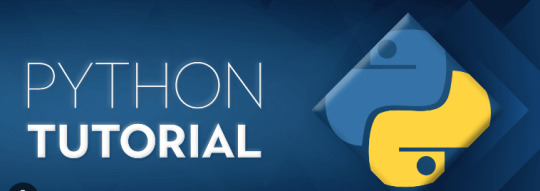
Setting Up a Virtual Environment
A virtual environment is a tool that helps to keep dependencies required by different projects separate by creating isolated spaces for them.
Install virtualenv: Type pip install virtualenvin your command prompt or terminal.
Create a Virtual Environment: Navigate to your project directory and type virtualenv myenv, where “myenv” is the name of your virtual environment.
Activate the Virtual Environment: Before you can start installing or using packages in your virtual environment you’ll need to activate it. On macOS and Linux, type source myenv/bin/activate. On Windows, type myenv\Scripts\activate
Essential Tools
Text Editor or IDE: This is where you’ll write your code. Some popular options include Sublime Text, Atom, PyCharm, and Visual Studio Code.
Command Line Interface: This is where you’ll run your code. On Windows, you can use Command Prompt or PowerShell. On macOS and Linux, you can use Terminal.
Version Control System (Git): This helps you manage different versions of your code. You can download Git from the official Git website.
Remember, setting up a development environment can take time and patience, but it’s a crucial part of being a successful developer.
Frontend Development with Python
Frontend development refers to the part of web development that involves creating the user interface and user experience of a website or web application. It includes everything that users interact with directly, such as text colors and styles, images, forms, and navigation menus.
Introduction to Frontend Development and How Python Fits Into It
While languages like HTML, CSS, and JavaScript have traditionally been used for frontend development, Python fits into this space too, thanks to frameworks like Flask and Django. These frameworks allow you to generate HTML, CSS, and JavaScript dynamically with Python code.
Python tutorial is particularly well-suited for backend development, but its simplicity and readability make it a good choice for frontend work as well. It allows for quick prototyping and iteration, and when combined with a frontend framework, Python can be a powerful tool for web development.
Overview of Python Libraries for Frontend Development
Two of the most popular Python libraries for frontend development are Flask and Django:
Flask is a lightweight WSGI web application framework. It’s designed to help developers get started with their web applications quickly and easily with the ability to scale up to complex applications.
Django is another high-level Python web framework that encourages rapid development and clean, pragmatic design. Built by experienced developers, it takes care of much of the hassle of web development, so you can focus on writing your app without needing to reinvent the wheel.
Hands-On Example: Creating a Simple Web Page Using Flask
Here’s how you can create a simple web page using Flask:
First, install Flask using pip: pip install flask
Next, create a new file called app.pyand add the following code:
from flask import Flask app = Flask(__name__) @app.route('/') def home(): return "Hello, World!" if __name__ == '__main__': app.run(debug=True)
3. You can run your application by typing python app.pyin your command line.
This will start a local web server running your application. If you navigate to http://localhost:5000in your web browser, you should see “Hello, World!” displayed.
Remember that while Python may not be a traditional language for frontend development, frameworks like Flask and Django provide powerful tools for building dynamic web applications with Python.
Backend Development with Python
Backend development refers to server-side development. It involves the functionalities of a website or web application that work behind the scenes, such as server configuration, application logic, and database management. Python, with its simplicity and wide range of libraries, is a popular choice for backend development.
Introduction to Backend Development and Python’s Role in It
Backend development is crucial as it powers the client side, i.e., everything that the user interacts with on a website or web application. It involves creating, deploying, and maintaining the technology needed to power those components which enable the user-facing side of the website to exist.
Python plays a significant role in backend development due to its readability, efficiency, and easy syntax. Its wide range of frameworks like Django and Flask make it even more powerful for backend programming. These frameworks have built-in functionalities that simplify tasks such as URL routing, template rendering, and database schema migrations.
Overview of Python Libraries for Backend Development
Python offers several libraries for backend development. Two of the most popular ones are Django and Flask:
Django: Django is a high-level Python web framework that encourages rapid development. It follows the DRY (Don’t Repeat Yourself) principle, aiming to reduce the repetition of software patterns.
Flask: Flask is a micro web framework written in Python. It does not include built-in abstractions for database handling or user authentication like Django does, giving you the flexibility to choose your tools.
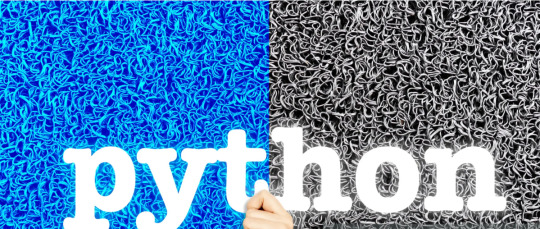
Hands-On Example: Setting Up a Simple Server Using Django
Here’s how you can set up a simple server using Django:
First, install Django using pip: pip install Django
Next, create a new Django project: Django-admin startproject mysite
Navigate into your new project directory: cd mysite
Start the development server: python manage.py runserver
This will start a local web server running your new Django project. If you navigate to http://localhost:8000in your web browser, you should see a welcome page confirming that Django has been set up correctly.
Remember that while Python may not be a traditional language for frontend development, frameworks like Flask and Django provide powerful tools for building dynamic web applications with Python.
Database Management
Database management is a crucial aspect of full stack development. It involves storing, retrieving, and manipulating data in databases. Efficient database management ensures that data is available, protected, and organized.
Explanation of Databases and Their Importance in Full Stack Development
A database is an organized collection of data stored and accessed electronically. Databases are crucial in full stack development as they allow web applications to store data persistently. This could be anything from user profiles, to product catalogs, to transaction histories.
Databases are important because they allow for data persistence and reliability. They provide efficient access to large amounts of data and help ensure that the data is consistent and correct. They also provide mechanisms for backup and recovery, ensuring data safety.
Overview of Python Libraries for Database Management
Python offers several libraries for database management, one of the most popular being SQLAlchemy:
SQLAlchemy: SQLAlchemy is a SQL toolkit and Object-Relational Mapping (ORM) system for Python. It provides a full suite of well-known enterprise-level persistence patterns, designed for efficient and high-performing database access.
Hands-On Example: Creating and Querying a Database Using SQLAlchemy
Here’s how you can create and query a database using SQLAlchemy:
First, install SQLAlchemy using pip: pip install SQLAlchemy
Next, create a new Python file and add the following code:
from SQLAlchemy import create_engine, Table, Metadata # create engine engine= create_engine('sqlite:///example.db') # create metadata metadata = Metadata() # define table users = Table('users', metadata, autoload_with=engine) # select query query = users.select() # execute query with engine.connect() as connection: result = connection.execute(query) for row in result: print(row)
This code creates a new SQLite database called example. dB, defines a table called users, and then queries this table to print all rows.
Remember, while Python may not be a traditional language for frontend development, libraries like SQLAlchemy provide powerful tools for managing databases in Python.

Best Practices for Python Full Stack Development
Being a Python full stack developer is a rewarding experience, but it also comes with its own set of challenges. Here are some tips and tricks to help you on your journey:
Master the Basics: Before diving into full stack development, make sure you have a solid understanding of Python basics. This includes data types, control structures, functions, and classes.
Understand Both Ends: Full stack development means you’re working on both the frontend and backend. Make sure to familiarize yourself with HTML, CSS, and JavaScript for frontend development, and with databases and server-side programming for backend development.
Choose the Right Framework: Python has several great frameworks for web development, including Django and Flask. Choose the one that best fits your project’s needs.
Write Clean Code: Writing clean, readable code is crucial in any programming project. Follow Python’s style guide (PEP 8) and use comments to make your code easier to understand.
Don’t Neglect Testing: Testing is an essential part of software development. Make sure to write tests for your code to catch bugs early and ensure your application is working as expected.
Keep Learning: The field of web development is always evolving. Keep up-to-date with the latest tools and technologies by reading blogs, taking online courses, and participating in coding communities.
Remember, becoming a proficient full stack developer takes time and practice, so don’t be discouraged if you encounter challenges along the way.
what are the best ways to learn Python full stack developer?
We run a training institute in Hyderabad named Brolly Academy. We do offer best Python full stack developer training in Hyderabad with job assistance. Now when you list the best ways to learn Python full stack developer include Brolly academy's Python full stack developer Training as one of the way.
https://brollyacademy.com/python-full-stack-developer-course-in-hyderabad
0 notes
Text
Empowering Minds: Essential Coding and Artificial Intelligence Books for Schools
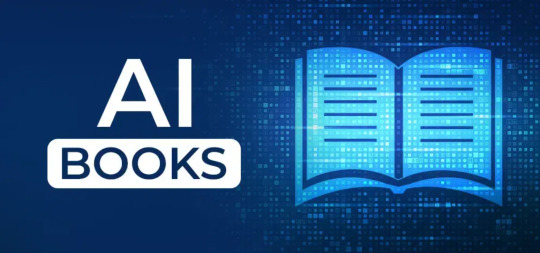
Introduction:
In an era driven by technology and innovation, it's imperative for educational institutions to equip students with the skills that will shape the future. The following list compiles 600 top-notch books on coding and artificial intelligence, carefully curated for schools to foster a generation of tech-savvy individuals.
Coding Books for Schools:Python Crash Course" by Eric Matthes:
An excellent introduction to programming using Python, catering to beginners and offering practical exercises."
JavaScript: The Good Parts" by Douglas Crockford:
Focuses on the essential parts of JavaScript, making it a valuable resource for students delving into web development.
Java: The Complete Reference" by Herbert Schildt:
A comprehensive guide for learning Java, covering everything from basic concepts to advanced topics.C++ Primer" by Stanley B. Lippman:
An in-depth guide for mastering C++, providing a solid foundation for students pursuing computer science.
HTML and CSS: Design and Build Websites" by Jon Duckett:
A visually appealing book that simplifies the concepts of HTML and CSS for creating stunning websites.
Algorithms" by Robert Sedgewick and Kevin Wayne:
An essential read for understanding algorithms, data structures, and their applications in problem-solving.
Clean Code: A Handbook of Agile Software Craftsmanship" by Robert C. Martin:
Teaches students the importance of writing clean and maintainable code, promoting best practices in software development.
Head First Design Patterns" by Eric Freeman, Elisabeth Robson, Bert Bates, and Kathy Sierra:
Introduces design patterns in a fun and engaging way, fostering good design practices among budding programmers.
Automate the Boring Stuff with Python" by Al Sweigart:
Inspires students to automate mundane tasks using Python, making programming more practical and enjoyable.
Code Complete: A Practical Handbook of Software Construction" by Steve McConnell:
A comprehensive guide covering the entire software development process, emphasizing the importance of high-quality code.
Artificial Intelligence Books for Schools:Artificial Intelligence: A Modern Approach" by Stuart Russell and Peter Norvig:
A widely used textbook providing a comprehensive introduction to the principles and techniques of AI.
Python Machine Learning" by Sebastian Raschka and Vahid Mirjalili:
Focuses on practical aspects of machine learning using Python, making it accessible for students.
Deep Learning" by Ian Goodfellow, Yoshua Bengio, and Aaron Courville:
An authoritative text on deep learning, offering insights into neural networks and their applications.
Hands-On Machine Learning with Scikit-Learn, Keras, and TensorFlow" by Aurélien Géron:
A practical guide for students to implement machine learning models using popular libraries.
Reinforcement Learning: An Introduction" by Richard S. Sutton and Andrew G. Barto:
An excellent resource for understanding reinforcement learning concepts, vital in AI development.
Artificial Intelligence: Foundations of Computational Agents" by David L. Poole and Alan K. Mackworth:
A textbook that explores the mathematical foundations of AI, making it suitable for advanced high school students.
Pattern Recognition and Machine Learning" by Christopher M. Bishop:
An essential read for students interested in pattern recognition and its applications in machine learning.
Artificial Intelligence: A Guide for Thinking Humans" by Melanie Mitchell:
Provides a broader perspective on AI, discussing its impact on society and ethical considerations.
Human Compatible: Artificial Intelligence and the Problem of Control" by Stuart Russell:
Explores the ethical challenges associated with AI, encouraging students to consider the societal implications of their work.
Machine Learning Yearning" by Andrew Ng:
A practical guide for students and practitioners on how to lead and manage machine learning projects effectively.
Conclusion:
These 600 coding and artificial intelligence books for schools lay the groundwork for a comprehensive and progressive education in technology. By integrating these resources into the curriculum, schools can empower students to become proficient coders and critical thinkers in the realm of artificial intelligence, ensuring they are well-prepared for the challenges and opportunities of the future.
0 notes
Text

Best Software Courses for Freshers in 2023
Introduction
In the fast-evolving landscape of technology, securing a job as a fresher can be challenging. The demand for software skills is higher than ever, making it crucial for newcomers to invest in the right courses. In this article, we'll explore the best software courses for freshers in 2023 and guide you through the process of choosing the right one for your career aspirations.
Current Job Market Trends
The job market is dynamic, with industries rapidly adopting digital transformation. This shift has created a surge in demand for professionals with software expertise. However, this demand comes with increased competition, making it essential for freshers to stand out.
Why Software Courses Matter
Staying updated with the latest technologies is vital in the tech-driven job market. Software courses not only equip freshers with the necessary skills but also enhance their overall employability. Employers seek candidates who can adapt to changing technologies, making software courses a valuable investment.
Top Software Courses for Freshers
Java Programming: Foundation for Many Applications
Java remains a cornerstone in software development, with applications ranging from mobile apps to enterprise systems.
Web Development: Building the Digital World
The internet is the backbone of the modern world, and web development courses empower freshers to create digital experiences.
Python: Versatility and Ease of Learning
Python's simplicity and versatility make it an excellent choice for beginners, and its applications span web development, data science, and more.
Data Science: Meeting the Demand for Data-Driven Insights
With businesses relying on data for decision-making, data science courses provide the skills to extract valuable insights.
Cybersecurity: Safeguarding Digital Assets
As digital threats rise, cybersecurity courses are essential for protecting sensitive information and digital infrastructure.
Choosing the Right Course
Selecting the right course involves assessing personal interests, career goals, and researching industry demands. Understanding the specific requirements of each course helps in making an informed decision.
Benefits of Each Course
Each software course offers unique benefits in terms of job opportunities, growth potential, real-world applications, and hands-on projects. It's crucial to align these benefits with your career aspirations.
Online vs. Offline Learning
Choosing between online and offline learning depends on individual preferences. While offline courses offer face-to-face interactions, online courses provide flexibility and accessibility. Consider your learning style and schedule when making this decision.
Certifications and Accreditation
Opt for courses with recognized certifications and accreditation. Employers value certifications from reputable institutions, adding credibility to your skills.
Industry Insights and Guest Speakers
Courses that provide industry insights and feature guest speakers enhance the learning experience. Practical knowledge shared by professionals in the field adds real-world context to theoretical concepts.
Building a Strong Portfolio
A well-curated portfolio showcases practical skills gained during the course. Tailor your portfolio to align with the specific job roles you are targeting, making it a powerful tool for job applications.
Internship Opportunities
Gaining practical experience through internships is invaluable for freshers. Seek internships during and after completing your courses to apply theoretical knowledge in real-world scenarios.
Networking in the Software Community
Building connections in the software community is essential for career growth. Utilize online platforms, attend events, and engage with professionals to expand your network.
Overcoming Challenges
Address common challenges faced by freshers, such as self-doubt and information overload. Stay motivated by breaking down your learning journey into manageable steps and celebrating small victories.
Success Stories
Inspirational success stories of individuals who started their careers with software courses highlight the transformative power of education. Learn from their experiences and stay inspired on your own journey.
Conclusion
Embarking on a software course journey is a significant step towards a successful career in the tech industry. The key is to choose the right course, stay motivated, and continuously adapt to evolving technologies. Remember, your journey is unique, and success is achievable with dedication and the right skill set.
#zenixuselearning#softwaretraining#programming#bestsoftwaretrainingcentre#artificial intelligence#coding#python#machine learning#javascript#java#php programming
0 notes
Text
Introduction to Java, Setup, and Syntax
Introduction to Java
Java, established in 1995 by James Gosling at Sun Microsystems (now owned by Oracle Corporation), is a versatile and influential programming language. Its reputation stems from the "Write Once, Run Anywhere" concept, which allows Java code to execute on any platform equipped with a Java Virtual Machine (JVM). This adaptability has made Java the top choice for building applications ranging from desktop and web apps to mobile and enterprise solutions.
Setting Up Your Java Environment
Before you can start coding in Java, it's crucial to set up your development environment properly. Here's a step-by-step guide to get you started:
Install Java Development Kit (JDK): The JDK is the foundation of Java development. It includes essential tools and libraries for writing, compiling, and running Java applications. You can download the latest JDK version from the official Oracle website or opt for open-source alternatives like OpenJDK.
Choose an Integrated Development Environment (IDE): While you can write Java code with a basic text editor, an Integrated Development Environment (IDE) significantly enhances your productivity. Popular Java IDEs such as Eclipse, IntelliJ IDEA, and NetBeans offer features like code completion, debugging, and project management.
Set Up the PATH Variable: To run Java commands from the command line, you need to add the directory containing Java binaries to your system's PATH variable. This ensures you can execute Java commands from any directory in your terminal.
Write Your First Java Program: Once your environment is set up, it's time to create a simple "Hello, World!" program to test your installation and get your first taste of Java coding.
Java Syntax
Java's syntax is designed to be relatively intuitive, particularly if you have experience with other programming languages. Here are some key elements of Java syntax:
Variables: In Java, you declare the data type of a variable before using it, such as int, String, or double.
Data Types: Java supports a range of data types, including primitive types (e.g., int, float, boolean) and reference types (objects, arrays, and classes).
Control Structures: Java uses common control structures such as if statements, for loops, and while loops to manage program flow.
Methods: Methods are blocks of code designed to perform specific tasks. You can create your methods or utilize predefined ones from Java's standard library.
Classes and Objects: Java's object-oriented nature relies heavily on classes and objects for code organization. A class serves as a blueprint for creating objects, while an object is an instance of a class.
Comments: You can add comments to your code, enhancing its readability for both you and other developers. Java supports both single-line and multi-line comments.
Inheritance and Polymorphism: Inheritance enables the creation of new classes based on existing ones, while polymorphism allows objects of different classes to be treated as objects of a common superclass.
Exception Handling: Java provides robust mechanisms for handling errors and exceptions that may arise during program execution.
In conclusion, Java is a versatile and widely-used programming language, offering a rich history and a promising future. By setting up your development environment and grasping the fundamentals of Java syntax, you'll be well on your way to mastering this powerful language. Whether you're a beginner or an experienced programmer, Java opens doors to countless opportunities in software development, making it a valuable skill in the tech industry.
1 note
·
View note
Text
"Your Programming Journey Starts Here: The Best Way to Learn Java for a Beginner"
Welcome to the world of Java programming, where we're excited to guide beginners on their journey to becoming proficient Java developers. Java is a powerful and widely used programming language known for its versatility and scalability. Our goal is to empower you with the knowledge and skills needed to create Java applications, solve real-world problems, and ultimately excel in the field of software development.

We'll take you through a structured and effective learning path with ACTE Technologies that will help you grasp the fundamental concepts of Java, explore its powerful features, and set you on the right path to becoming a proficient Java developer. Let's begin this exciting journey into the world of Java programming, where your foray into the realm of code begins and endless possibilities await.
Certainly, here's a more detailed explanation for each of the steps:
Step 1 - Java Core:
Introduction to Java: Begin by getting familiar with the Java programming language, understanding its syntax, and how it works.
Basic Concepts: Learn fundamental concepts such as creating classes, defining methods, handling variables, and using control structures like loops and conditionals.
Object-Oriented Programming (OOP): Dive into the core principles of OOP, which are integral to Java. Understand concepts like classes, objects, inheritance, polymorphism, encapsulation, and abstraction.
Data Types: Explore the various data types available in Java, including integers, floating-point numbers, characters, and more.
Arrays and Collections: Learn how to work with arrays, which allow you to store multiple values in a single variable. Additionally, understand collections, which provide powerful data structures for managing groups of objects.
Exception Handling: Discover how to handle errors and unexpected situations in your code by implementing exception handling mechanisms.
Practice: Apply what you've learned by writing small Java programs and practicing coding exercises to reinforce your knowledge.
Step 2 - Java Core Practice:
Practical Application: Put your Java skills to the test by working on practical exercises and coding challenges. This phase is all about hands-on experience.
Problem Solving: Tackle problems like Fizz-Buzz or sorting algorithms to develop your problem-solving abilities.
Confidence Building: Gain confidence in your coding skills as you successfully complete exercises and see your code in action.
Real-World Applications: Practice writing Java code that can be used in real-world scenarios, preparing you for practical Java development tasks.

Step 3 - SQL, Networking, Threading, Performance:
SQL (Structured Query Language): Dive into the world of databases by learning SQL, which is used to manage and query relational databases. Understand concepts like creating, retrieving, updating, and deleting data.
Networking: Explore how data is transmitted between computers over networks. Learn about protocols, sockets, and network communication.
Multithreading: Understand the concept of multithreading, which allows your Java applications to perform multiple tasks concurrently. Learn how to manage threads effectively.
Performance Optimization: Discover techniques for optimizing your Java code to improve execution speed and resource utilization. Ensure your applications run efficiently.
Step 4 - Development Principles and Practices:
Software Development Principles: Learn key software development principles such as SOLID (Single Responsibility, Open-Closed, Liskov Substitution, Interface Segregation, and Dependency Inversion). Understand how these principles contribute to writing maintainable and scalable code.
Clean Code Practices: Embrace clean code practices, which involve writing code that is easy to understand, modify, and maintain. Learn about code readability, code structure, and naming conventions.
Testing: Implement unit testing to verify the correctness of your code. Learn how to write test cases and use testing frameworks to ensure code reliability.
Collaborative Development: Engage in code reviews to collaborate with other developers and improve code quality. Learn how to provide and receive constructive feedback.
Agile Methodologies: Explore Agile methodologies such as Scrum or Kanban, which are used for effective project management and iterative development.
Version Control: Gain proficiency in version control systems like GIT to track code changes, collaborate with others, and manage code repositories.
These steps provide a structured learning path for beginners to gradually build their Java programming skills and become proficient Java developers. Each step builds upon the knowledge and skills acquired in the previous one, leading to a well-rounded understanding of Java development.
With the skills and knowledge you've acquired, you are well-prepared to take on real-world Java projects and contribute to the technology industry. Remember that learning is a continuous process, and your Java proficiency will continue to grow with each project and challenge you tackle. As you move forward, you'll find countless opportunities to apply your skills, innovate, and shape the future of software development.
We're proud to have been a part of your learning journey, and we wish you every success as you continue to explore the vast world of Java programming at ACTE Technologies. If you want to learn more about Java, I highly recommend that you contact ACTE technologies because they offer certifications and job placement opportunities. Experienced teachers can help you learn better. You can find these services both online and offline. Take things step by step and consider enrolling in a course if you’re interested.
Keep coding, keep learning, and enjoy your exciting career ahead!
0 notes
Text
Learn Java Training Programming with AppWarsTechnologies
Are you eager to delve into the world of programming and software development? If so, learning Java could be your ideal starting point. Java is a versatile and widely used programming language known for its simplicity and scalability. Whether you're a complete beginner or have some programming experience, a Java training course can equip you with valuable skills and knowledge. In this article, we'll explore the benefits of taking a Java training course, what you can expect to learn, and why AppWars Technologies is the perfect place to embark on your Java journey.
Why Learn Java?
Java is a high-level, object-oriented programming language that has stood the test of time. It was first released in 1995 and has since become one of the most popular programming languages in the world. But why should you consider learning Java? Here are some compelling reasons:
1. Versatility:
Java can be used for a wide range of applications, from developing mobile apps to building web applications, desktop software, and even embedded systems. Learning Java opens up numerous career opportunities in various domains.
2. Beginner-Friendly:
Java was designed with simplicity in mind. Its syntax is easy to grasp, making it an excellent choice for beginners. You don't need prior programming experience to start learning Java.
3. Platform Independence:
Java is known for its "write once, run anywhere" capability. This means you can write Java code on one platform and run it on multiple platforms without modification. This makes Java a versatile choice for cross-platform development.
4. High Demand:
There is a constant demand for Java developers in the job market. Learning Java can lead to a stable and well-paying career in the tech industry.
5. Strong Community:
Java has a large and active community of developers who provide support, share knowledge, and contribute to its continuous improvement. This makes it easier to find resources and help when you need it.
What You'll Learn in a Java Training Course
A Java training course typically covers a wide range of topics to ensure you have a solid foundation in the language. Here's an overview of what you can expect to learn:
1. Java Syntax and Basics:
Variables, data types, and operators.
Control structures like loops and conditional statements.
Functions and methods.
Object-oriented programming principles.
2. Java Development Environment:
Setting up Java on your computer.
Using Integrated Development Environments (IDEs) like Eclipse or IntelliJ IDEA.
Compiling and running Java programs.
3. Object-Oriented Programming (OOP):
Understanding classes and objects.
Encapsulation, inheritance, and polymorphism.
Design principles and best practices.
4. Exception Handling:
Dealing with errors and exceptions in Java.
Writing robust and reliable code.
5. Collections and Data Structures:
Working with arrays, lists, sets, and maps.
Algorithms for data manipulation and sorting.
6. File I/O:
Reading and writing files using Java.
7. Multithreading:
Creating and managing multiple threads.
Synchronization and concurrency control.
8. Database Connectivity:
Connecting to databases and performing CRUD operations.
9. Introduction to Frameworks:
An overview of popular Java frameworks like Spring and Hibernate.
- Building practical projects to apply your knowledge.
Why Choose AppWars Technologies for Java Training?
When it comes to selecting an institute for your Java training, AppWars Technologies stands out as an excellent choice. Here's why:
1. Experienced Instructors:
At AppWars Technologies, you'll learn from industry experts with years of experience in Java development. They'll provide you with valuable insights and practical knowledge that goes beyond textbooks.
2. Hands-On Learning:
The institute emphasizes a hands-on learning approach. You won't just learn theory; you'll work on real-world projects and gain practical experience.
3. Comprehensive Curriculum:
The Java training course at AppWars Technologies covers all the essential topics and ensures you have a well-rounded understanding of the language and its applications.
4. Supportive Learning Environment:
AppWars Technologies fosters a supportive and collaborative learning environment. You'll have access to mentors and a community of fellow learners who can help you along the way.
5. Job Placement Assistance:
AppWars Technologies goes the extra mile by offering job placement assistance. They have connections with leading tech companies and can help you kickstart your career in Java development.
In conclusion
learning Java through a comprehensive training course is an excellent choice for anyone interested in programming and software development. The language's versatility, simplicity, and high demand in the job market make it a valuable skill to acquire. If you're considering a Java training course, look no further than AppWars Technologies. Their experienced instructors, hands-on approach, and job placement assistance make them the ideal choice to help you embark on your journey into the world of Java programming. Start your Java adventure with AppWars Technologies today!
0 notes
Text
Which classes are best for coding?

The Best coding classes for you will depend on your specific goals, prior experience, and the programming languages or technologies you want to learn. Here are some popular types of coding classes, along with examples of when they might be the best fit:
Introductory Programming Classes
If you're new to coding, introductory classes are the best place to start. They cover the basics of programming concepts and often use beginner-friendly languages like Python. Examples include "Introduction to Python" on platforms like Coursera, edX, or Codecademy.
Web Development Classes
If you want to become a web developer, consider classes that focus on web technologies like HTML, CSS, JavaScript, and front-end or back-end development. For instance, "Full-Stack Web Development Bootcamps" from coding bootcamps like General Assembly or online courses like "The Complete Web Developer Course" on Udemy.
Data Science and Machine Learning Classes
For those interested in data analysis, machine learning, or AI, classes in data science and machine learning are valuable. Check out courses like "Machine Learning" on Coursera by Andrew Ng or "Data Science Specialization" on Coursera by Johns Hopkins University.
Mobile App Development Classes
If you want to create mobile apps for iOS or Android, consider classes that focus on app development. "iOS App Development with Swift" on Udemy or "Android App Development" on Coursera are good options.
Programming Language-Specific Classes
If you have a specific programming language in mind (e.g., Java, C++, JavaScript), you can find dedicated courses for mastering that language. For example, "JavaScript: The Complete Guide" on Udemy.
Coding Bootcamps
Coding bootcamps offer intensive, immersive programs that can take you from a beginner to a job-ready coder in a relatively short period. Examples include General Assembly, Flatiron School, and Le Wagon.
0 notes